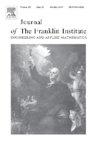具有动态障碍物的索驱动连续体机器人的轨迹规划与跟踪控制
IF 4.2
3区 计算机科学
Q2 AUTOMATION & CONTROL SYSTEMS
Journal of The Franklin Institute-engineering and Applied Mathematics
Pub Date : 2025-09-19
DOI:10.1016/j.jfranklin.2025.108089
引用次数: 0
摘要
为实现具有动态障碍物的缆索驱动连续体机器人的安全最优轨迹规划和高性能跟踪控制,设计了一种基于两层模型预测控制(MPC)的新型轨迹规划与跟踪控制器。在外层,通过惩罚项将软约束纳入成本函数并集成到MPC中,从而保证了CDCR避障的安全性,同时有效地缓解了硬约束导致的不可行的解决方案问题。此外,将改进的灰狼优化器(IGWO)引入到基于mpc的轨迹规划中,以实现最优避障。其中,为了获得动态障碍物的运动估计,将超扭转观测器(STO)与基于mpc的轨迹规划器相结合来预测运动障碍物的状态。在内层,IGWO被融合到MPC中,以实现轨迹跟踪控制的高精度和快速收敛。仿真和实验结果表明,本文提出的两层MPC算法在不确定环境中对CDCR通过动态障碍物的轨迹规划和跟踪方面取得了良好的效果。本文章由计算机程序翻译,如有差异,请以英文原文为准。
Trajectory planning and tracking control for cable-driven continuum robots with dynamic obstacles
To obtain safe and optimal trajectory planning and high-performance tracking control for cable-driven continuum robots (CDCRs) with dynamic obstacles, a novel two-layer model predictive control (MPC) based trajectory planning and tracking controller is designed. In the outer layer, a soft constraint is incorporated into the cost function via a penalty term and integrated into MPC, thereby ensuring the safety of CDCR obstacle avoidance while effectively mitigating the issue of infeasible solutions that arise from hard constraints. Additionally, an improved grey wolf optimizer (IGWO) is introduced into MPC-based trajectory planner to achieve optimal obstacle avoidance. Particularly, to obtain the motion estimation of dynamic obstacles, a super-twisting observer (STO) is combined with the MPC-based trajectory planner to predict the state of moving obstacles. In the inner layer, the IGWO is merged into MPC to attain high precision and rapid convergence in trajectory tracking control. Both simulation and experimental results show that the proposed two-layer MPC achieves excellent effectiveness in trajectory planning and tracking for the CDCR navigating dynamic obstacles within uncertain environments.
求助全文
通过发布文献求助,成功后即可免费获取论文全文。
去求助
来源期刊
CiteScore
7.30
自引率
14.60%
发文量
586
审稿时长
6.9 months
期刊介绍:
The Journal of The Franklin Institute has an established reputation for publishing high-quality papers in the field of engineering and applied mathematics. Its current focus is on control systems, complex networks and dynamic systems, signal processing and communications and their applications. All submitted papers are peer-reviewed. The Journal will publish original research papers and research review papers of substance. Papers and special focus issues are judged upon possible lasting value, which has been and continues to be the strength of the Journal of The Franklin Institute.

 求助内容:
求助内容: 应助结果提醒方式:
应助结果提醒方式:


